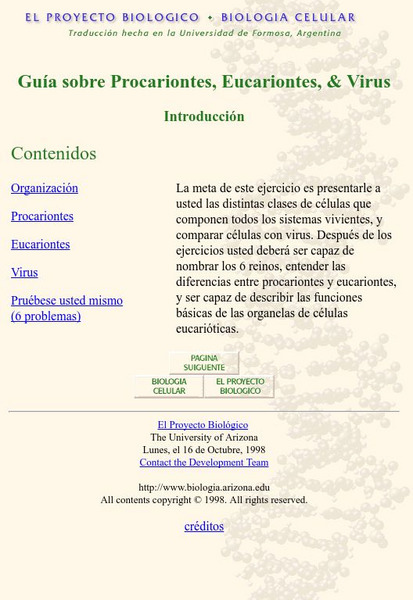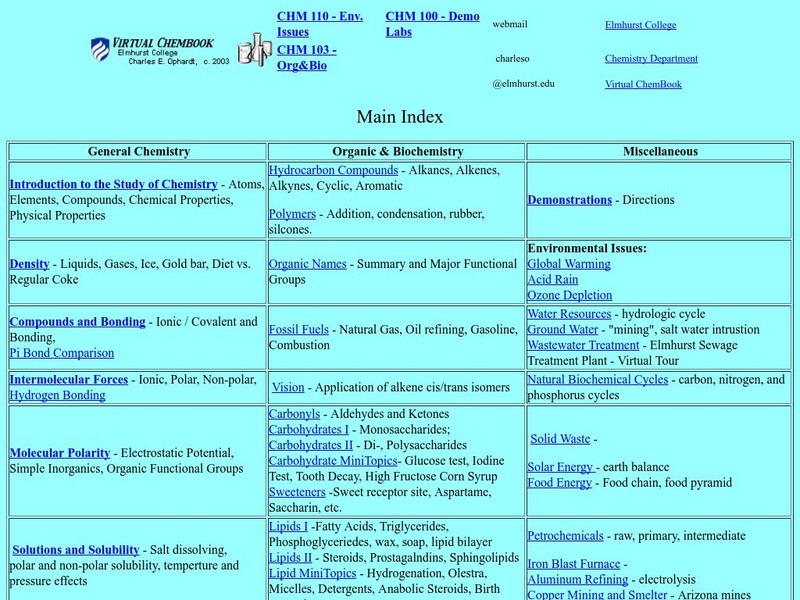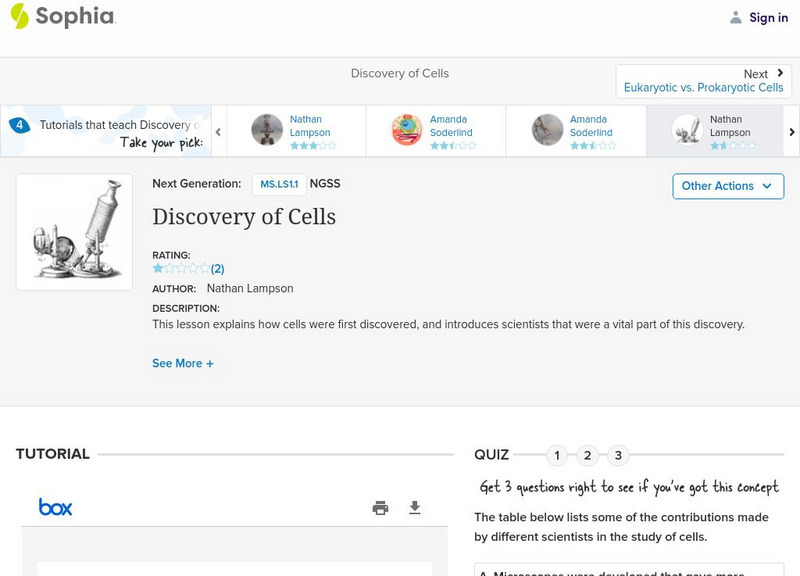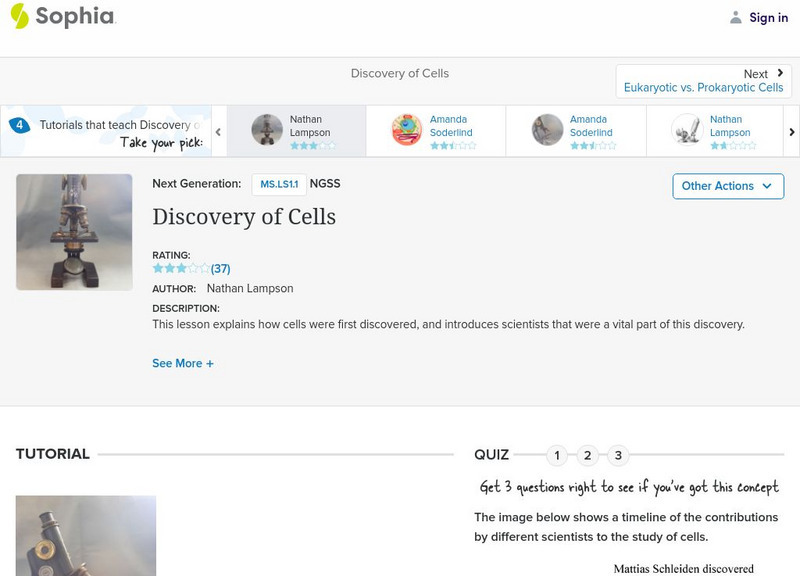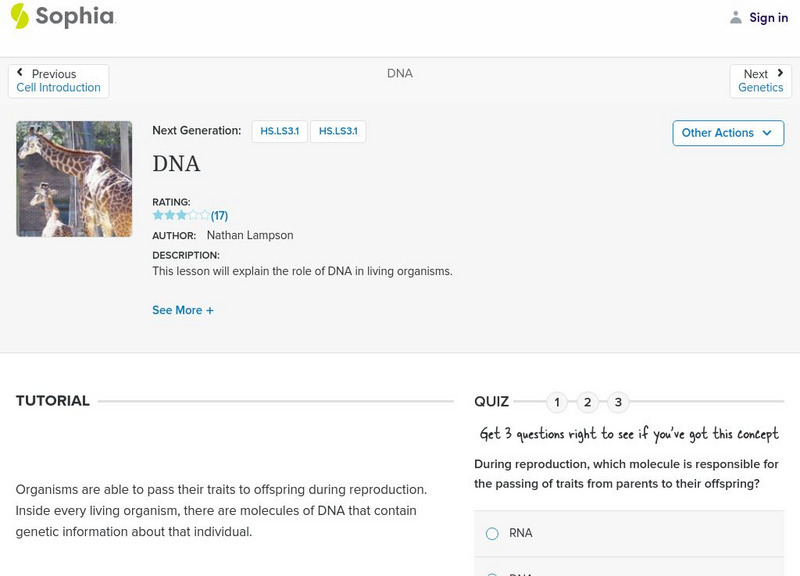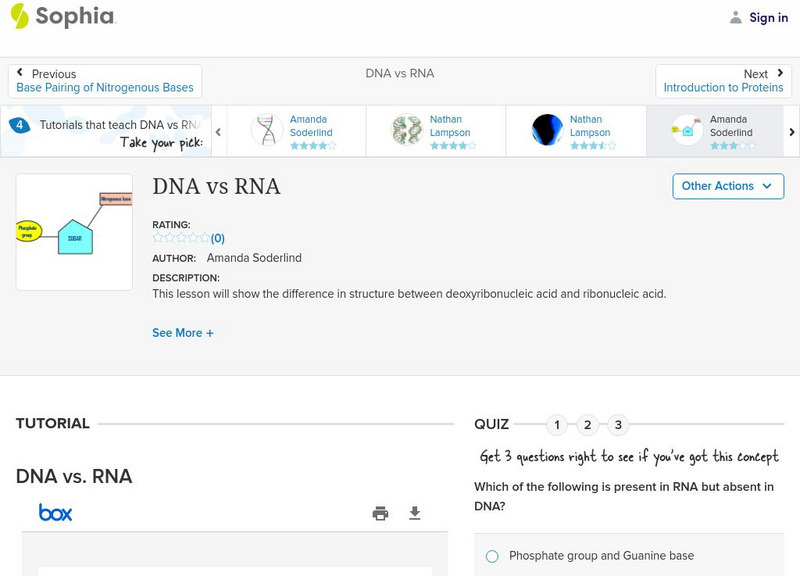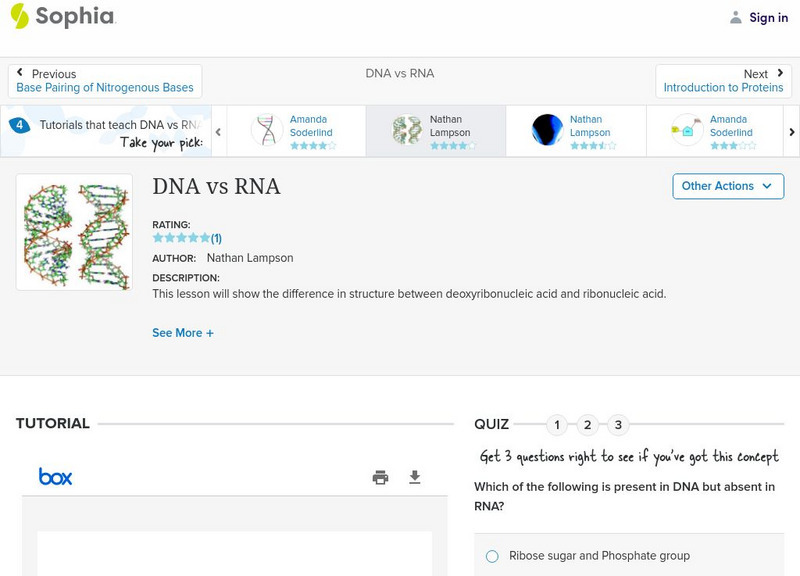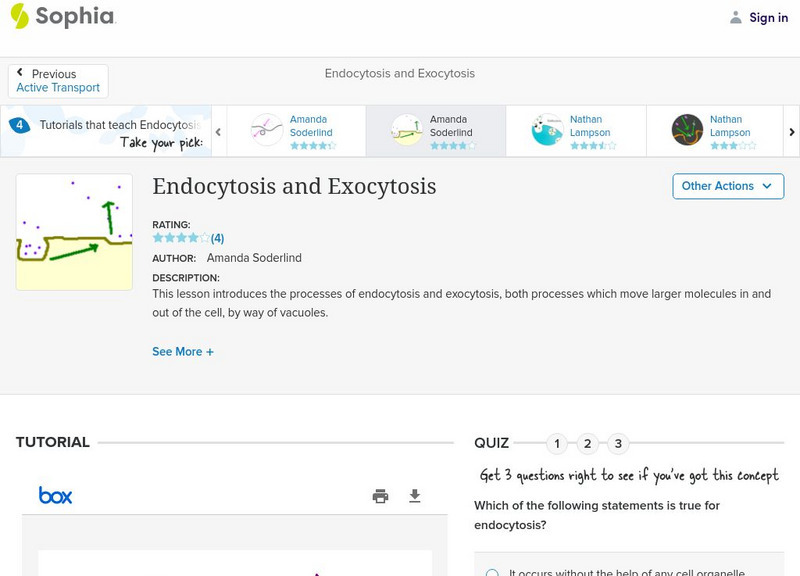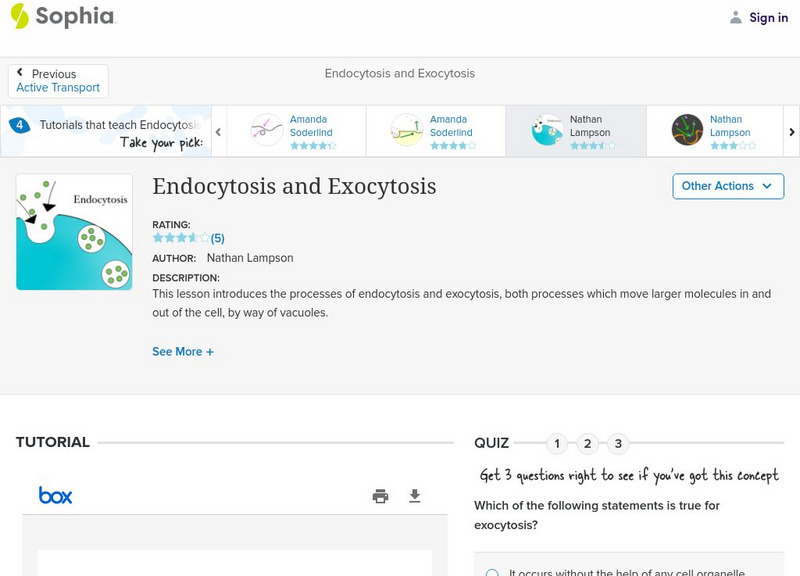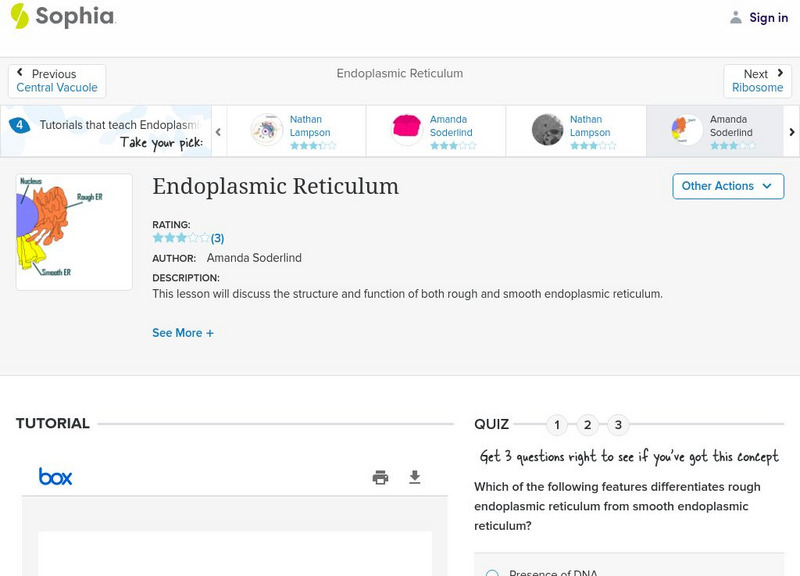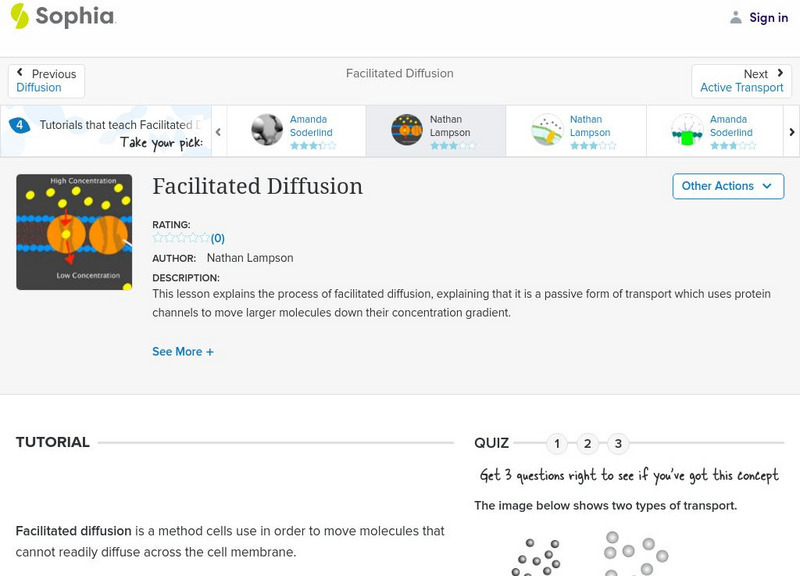University of Arizona
University of Arizona: Guia Sobre Procariontes, Eucariontes &Virus
This exercise is to introduce you to the kinds of cells that make up all living systems, and to contrast cells with viruses. At the end you can test your understanding of these topics by taking a short test.
Exploratorium
Exploratorium: Microscope Imaging Station: Cell Motility
This interesting site explains how cells move and provides videos depicting the movement of various human and animal cells.
Other
Fundamentals of Reverse Osmosis
This site provides a basic definition of reverse osmosis, with a bit of a slant on why water pretreatment is important.
Other
Bryan Ness' Home Page: Tem Showing a Nucleolus
View an electron micrograph of a mast cell with obvious nucleolus. This picture has a caption.
Other
Elmhurst College: Protein Synthesis
Illustrated explanation of the different steps in protein synthesis. At the end of the article, there are links to some good animations of the process.
University of Arizona
University of Arizona: Puntas De Raiz De Cebolla Online
In this activity you will be able to classify and count the cells from the tip of an onion root into the appropriate phases of the cell cycle. You can use your count to predict the time a dividing cell spends in each phase.
Sophia Learning
Sophia: Discovery of Cells: Lesson 3
This lesson explains how cells were first discovered, and introduces scientists that were a vital part of this discovery. It is 3 of 4 in the series titled "Discovery of Cells."
Sophia Learning
Sophia: Discovery of Cells: Lesson 4
This lesson explains how cells were first discovered, and introduces scientists that were a vital part of this discovery. It is 4 of 4 in the series titled "Discovery of Cells."
Sophia Learning
Sophia: Discovery of Cells: Lesson 1
This lesson explains how cells were first discovered, and introduces scientists that were a vital part of this discovery. It is 1 of 4 in the series titled "Discovery of Cells."
Sophia Learning
Sophia: Dna: Lesson 2
Explains how DNA contains genetic material and how it is housed in chromosomes. This lesson is 2 of 5 in the series titled "DNA."
Sophia Learning
Sophia: Dna: Lesson 1
Explains how DNA contains genetic material and how it is housed in chromosomes. This lesson is 1 of 5 in the series titled "DNA."
Sophia Learning
Sophia: Dna: Lesson 5
This lesson will explain the role of DNA in living organisms. It is 5 of 5 in the series titled "DNA."
Sophia Learning
Sophia: Dna vs Rna: Lesson 3
This lesson will show the difference in structure between deoxyribonucleic acid and ribonucleic acid. It is 3 of 4 in the series titled "DNA vs RNA."
Sophia Learning
Sophia: Dna vs Rna: Lesson 4
This lesson will show the difference in structure between deoxyribonucleic acid and ribonucleic acid. It is 4 of 4 in the series titled "DNA vs RNA."
Sophia Learning
Sophia: Dna vs Rna: Lesson 1
This lesson will show the difference in structure between deoxyribonucleic acid and ribonucleic acid. It is 1 of 4 in the series titled "DNA vs RNA."
Sophia Learning
Sophia: Endocytosis and Exocytosis: Lesson 3
This lesson introduces the processes of endocytosis and exocytosis, both processes which move larger molecules in and out of the cell, by way of vacuoles. It is 3 of 4 in the series titled "Endocytosis and Exocytosis."
Sophia Learning
Sophia: Endocytosis and Exocytosis: Lesson 4
This lesson introduces the processes of endocytosis and exocytosis, both processes which move larger molecules in and out of the cell, by way of vacuoles. It is 4 of 4 in the series titled "Endocytosis and Exocytosis."
Sophia Learning
Sophia: Endoplasmic Reticulum: Lesson 4
This lesson will discuss the structure and function of both rough and smooth endoplasmic reticulum. It is 4 of 6 in the series titled "Endoplasmic Reticulum."
Sophia Learning
Sophia: Enzyme Function: Lesson 4
This lesson will describe how an enzyme is used to turn substrate into product. It is 4 of 5 in the series titled "Enzyme Function."
Sophia Learning
Sophia: Enzyme Structure: Lesson 4
This lesson will describe that enzymes are made of proteins, and can be found in nature or can be synthesized synthetically. It is 4 of 4 in the series titled "Enzyme Structure."
Sophia Learning
Sophia: Eukaryotic vs. Prokaryotic Cells: Lesson 1
This lesson explains the difference between Eukaryotic and Prokaryotic cells. It is 1 of 4 in the series titled "Eukaryotic vs. Prokaryotic Cells."
Sophia Learning
Sophia: Facilitated Diffusion: Lesson 3
This lesson explains the process of facilitated diffusion, explaining that it is a passive form of transport which uses protein channels to move larger molecules down their concentration gradient. It is 3 of 9 in the series titled...
Sophia Learning
Sophia: Facilitated Diffusion: Lesson 4
This lesson explains the process of facilitated diffusion, explaining that it is a passive form of transport which uses protein channels to move larger molecules down their concentration gradient. It is 4 of 9 in the series titled...
Sophia Learning
Sophia: Facilitated Diffusion: Lesson 5
This lesson explains the process of facilitated diffusion, explaining that it is a passive form of transport which uses protein channels to move larger molecules down their concentration gradient. It is 5 of 9 in the series titled...


